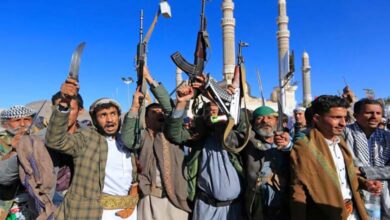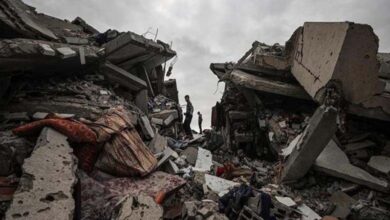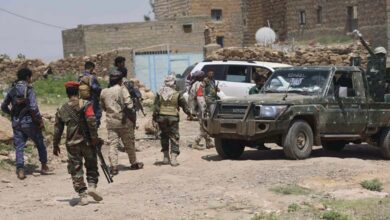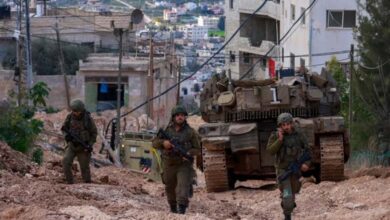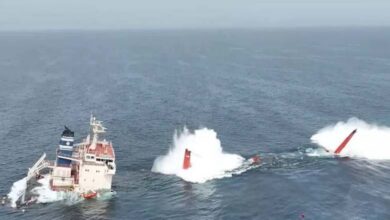Gaza After the Truce: Total Destruction and a Return Amid the Rubble
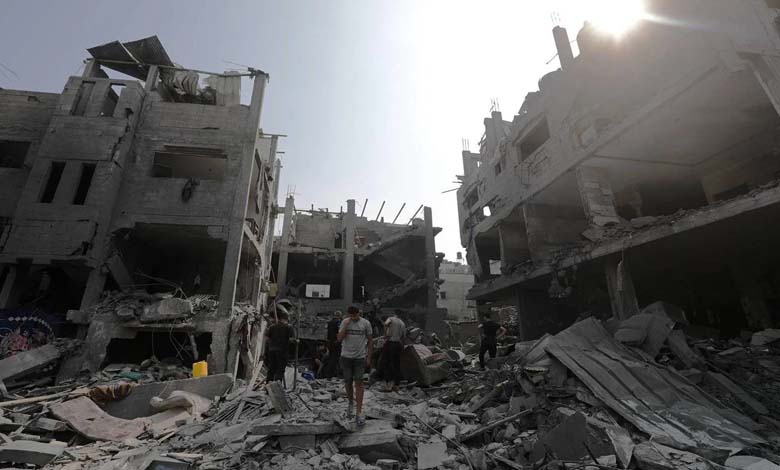
They had grown used to this recurring journey of displacement and return, yet this time their homecoming unfolded amid utter devastation, stripping away much of the joy that might have accompanied it.
-
Hamas and the Muslim Brotherhood: A Persistent Security Threat to Europe
-
Curfew and Clashes: Hamas Attacks the al‑Majayda Family in Gaza, Deepening Residents’ Suffering
As Gaza’s displaced people made their way back, they realized they were walking down desolate roads leading to the wreckage of their former lives and memories. Still, the relief of returning prevailed: their eyes glimmered with cautious hope, their lips forming quiet smiles as if to say, “We are happy—we’re going home, despite the ruins.”
Thousands of displaced residents walked north from the southern parts of Gaza, some following the coastal Al-Rashid Street on foot, to see what remained of their homes. Others returned to Khan Younis in the south, according to AFP reports.
-
Trump’s Plan and Hamas’s Response: Points of Convergence and Divergence
-
Gaza Residents Back Trump’s Plan and Shout at Hamas: Enough
A ceasefire between Israel and Hamas came into effect at noon on Friday, ending two years of devastating war in Gaza. Following the announcement, crowds of displaced Palestinians began heading home, hoping to reclaim what little was left.
Israeli Prime Minister Benjamin Netanyahu said he hoped to celebrate a “national day of joy” on Monday evening, marking the return of “all the hostages” held in Gaza.
U.S. President Donald Trump expressed confidence that the ceasefire would hold, telling White House reporters that “everyone there is tired of fighting.” He is expected to travel to the Middle East this weekend, visiting Israel first to address the Knesset before heading to Egypt for meetings on Gaza’s future.
-
Refusal to Apologize for the Cost of War: Senior Hamas Official Distances Himself from Gaza Civilians’ Suffering
-
On the second anniversary: how did Hamas carry out the October 7 attack?
Aerial photographs published by AFP showed the extent of the destruction in Khan Younis and northern Gaza, revealing entire neighborhoods reduced to rubble.
“By God, I am happy about the truce and the peace, even though I lost a son and a daughter,” said Areej Abu Saadiya, 53. “I am heartbroken, but the ceasefire brings some joy because we are going back home.”
“We are going back to clean our homes,” said Amir Abu Ayada, 32. “Despite the destruction, the blockade, and the pain, we’re returning to our neighborhoods full of wounds, yet grateful. We are happy, and we hope this calm continues.”
-
Recruitment, Tunnels, and Surprises: Israeli Intelligence Unveils Hamas’s Plans
-
Quarter of a million displaced from Gaza City as Israel vows to defeat Hamas
According to Gaza’s Civil Defense spokesman Mahmoud Basal, approximately 200,000 people returned to northern Gaza on Friday. The Israeli army announced a partial redeployment of its forces while warning that several areas remained “extremely dangerous” for civilians.
Rescue workers used the ceasefire to comb through the debris, discovering 63 bodies in Gaza City alone.
The Foreign Press Association in Jerusalem urged Israeli authorities to allow independent access to Gaza, arguing that there was “no longer any justification” for restricting entry. Israel has maintained tight control over journalists’ access to the enclave for the past two years.
-
Israel Fails to Assassinate Khalil al-Hayya, Hamas’ Voice Abroad
-
Hamas confirms the death of Mohammed al-Sinwar, al-Haddad expected to succeed him
The ceasefire followed the approval by both Israel and Hamas of the first phase of the U.S. peace plan for Gaza, negotiated indirectly in Sharm el-Sheikh under American, Egyptian, and Qatari mediation, with Turkish participation.
This initial phase includes a cessation of hostilities, an exchange of Israeli hostages and Palestinian prisoners, and partial Israeli withdrawals.
U.S. envoy Steve Witkoff confirmed that Israel had completed its withdrawals in accordance with the agreement, marking the start of a “72-hour period for the release of hostages.”
-
Intensive Mediation Efforts… Details of the Last Chance Negotiations Between Israel and Hamas
-
France Clarifies: Our Recognition of Palestine Shows Hamas Is Wrong
Israeli government spokesperson Shosh Bedrosian said that the army would retain control of 53% of Gaza’s territory.
Netanyahu stated that out of 48 hostages, 20 were still alive while 28 had been killed — the first official confirmation of two previously unreported deaths.
Israel’s Ministry of Justice released a list of 250 Palestinian prisoners expected to be freed, excluding prominent figures such as Marwan Barghouti and Ahmad Saadat.
The second phase of Trump’s plan — the most contentious part — calls for Hamas’s disarmament, the exile of its fighters, and continued gradual Israeli withdrawal. Hamas has rejected the demand for disarmament and insists on a complete Israeli pullout, while Israel maintains its intention to keep military control over most of the enclave.


